Salt Lake City, UT Pollen and Allergy Report for Summer 2023
Pollen Allergy Trends in Salt Lake City, UT
When is pollen lowest in Salt Lake City, UT?

February
Lowest month total PPM
Avg. PPM
When is pollen highest in Salt Lake City, UT?

May
Highest month total PPM
Avg. PPM
How does pollen in Salt Lake City, UT compare to Utah?
Salt Lake City has a lower average PPM than the state of Utah.
Salt Lake City yearly avg PPM:
Utah yearly avg PPM:
How does pollen in Salt Lake City, UT compare to the USA?
Salt Lake City has a lower average PPM than the USA.
Salt Lake City yearly avg PPM:
USA yearly avg PPM:
Is pollen worse this year in Salt Lake City, UT?
Spring 2023 was worse than spring 2022.
Spring 2023 PPM:
Spring 2022 PPM:
Average PPM in Salt Lake City, UT

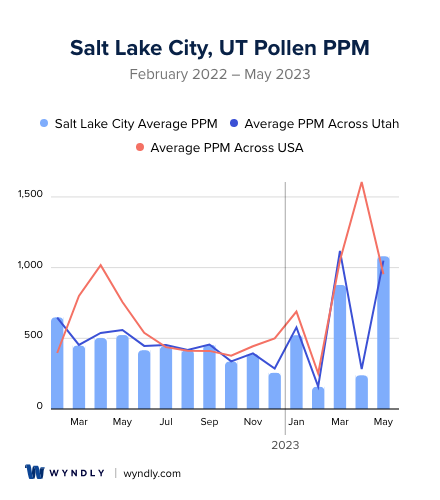
Salt Lake City, UT Pollen and Allergy Breakdown by Month
Grass
When is grass pollen highest in Salt Lake City, UT?
May has the highest grass pollen in Salt Lake City, UT with an average PPM of
When is grass pollen lowest in Salt Lake City, UT?
November has the lowest grass pollen in Salt Lake City, UT with an average PPM of
Tree
When is tree pollen highest in Salt Lake City, UT?
May has the highest tree pollen in Salt Lake City, UT with an average PPM of
When is tree pollen lowest in Salt Lake City, UT?
August has the lowest tree pollen in Salt Lake City, UT with an average PPM of
Weed
When is weed pollen highest in Salt Lake City, UT?
September has the highest weed pollen in Salt Lake City, UT with an average PPM of
When is weed pollen lowest in Salt Lake City, UT?
February has the lowest weed pollen in Salt Lake City, UT with an average PPM of
Salt Lake City, UT Pollen Monthly Breakdown by Pollen Type
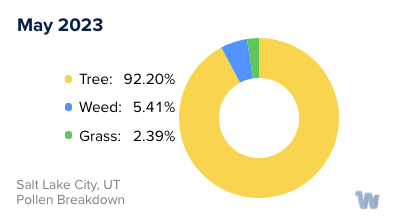
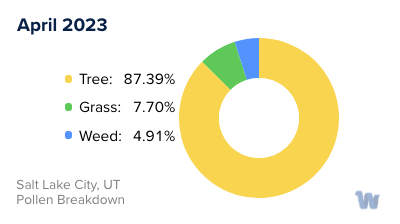
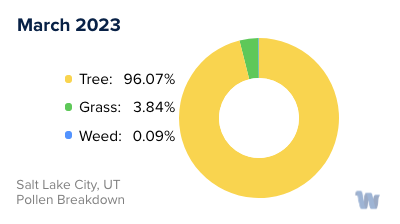
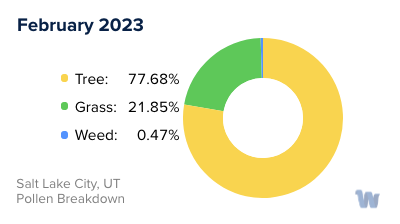
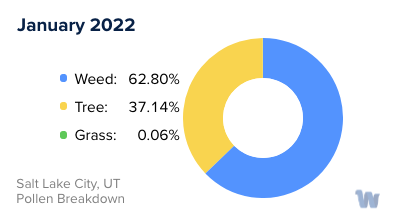
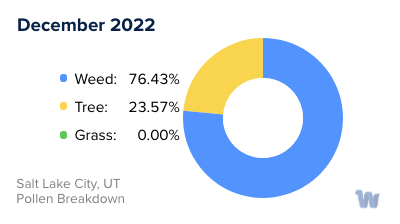
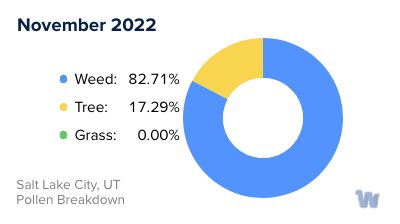
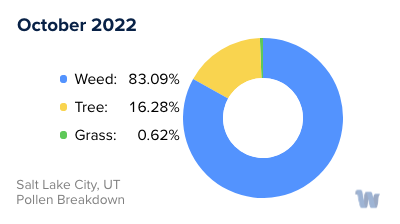
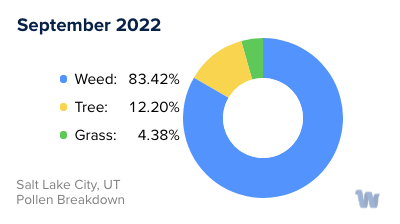
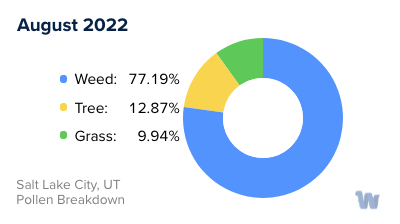
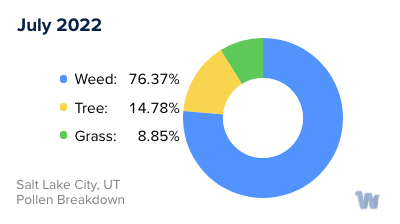
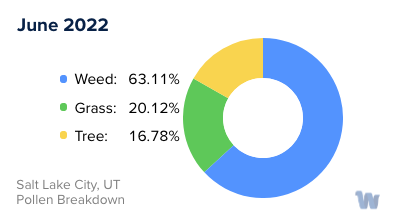
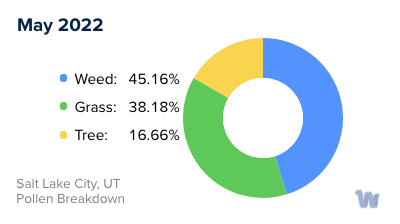
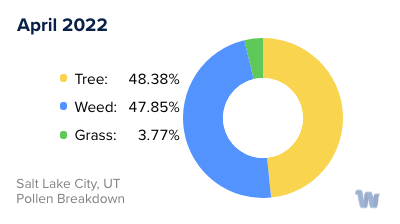
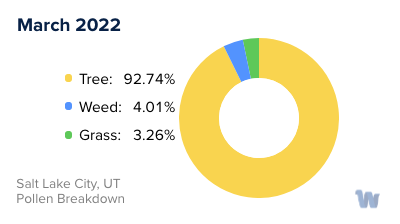
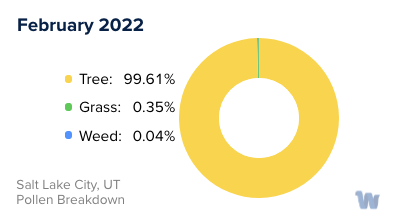
Pollen and Hay Fever in Salt Lake City, UT
Living in the scenic backdrop of Salt Lake City, Utah, residents and visitors alike often find themselves in a love-hate relationship with the great outdoors, particularly during the pollen seasons. If your eyes water at the sight of the magnificent mountains or your nose starts to itch during a walk around Temple Square, it's possible that you may be experiencing pollen allergies, also known as hay fever.
Pollen allergies are your body's way of overreacting to tiny grains released into the air by plants for fertilization. In Salt Lake City, different types of pollen can trigger allergies at various times of the year. The city's rich biodiversity is both a charm and a challenge to individuals with sensitive immune systems.
The spring season is usually marked by tree pollination. Between late February and early June, species such as oak, maple, and pine release copious amounts of pollen into the air. The idyllic neighborhoods lined with these trees can be a sight to behold, but they may also be the source of your sneezing fits and itchy eyes.
As the summer sun brightens the Salt Lake City skyline, grass pollen enters the scene. From late spring to early summer, common grasses such as Bermuda grass, Kentucky bluegrass, and ryegrass release their pollen, often causing discomfort to those enjoying outdoor activities.
Finally, as autumn approaches, weed pollen becomes the main culprit. Ragweed, sagebrush, and chenopods, common in the Utah landscape, distribute their pollen from late summer to mid-fall, marking the last significant wave of pollen-related allergies for the year.
Thus, the beauty of Salt Lake City's changing seasons is tinged with the challenge of managing pollen allergies. Each season brings its unique mix of pollinating plants, and with them, the discomfort of hay fever for many residents and visitors. Even though this piece doesn't discuss treatments or remedies, it's always advisable to consult with a healthcare provider if you suspect you're dealing with pollen allergies. Awareness and understanding are the first steps in managing this common condition.

